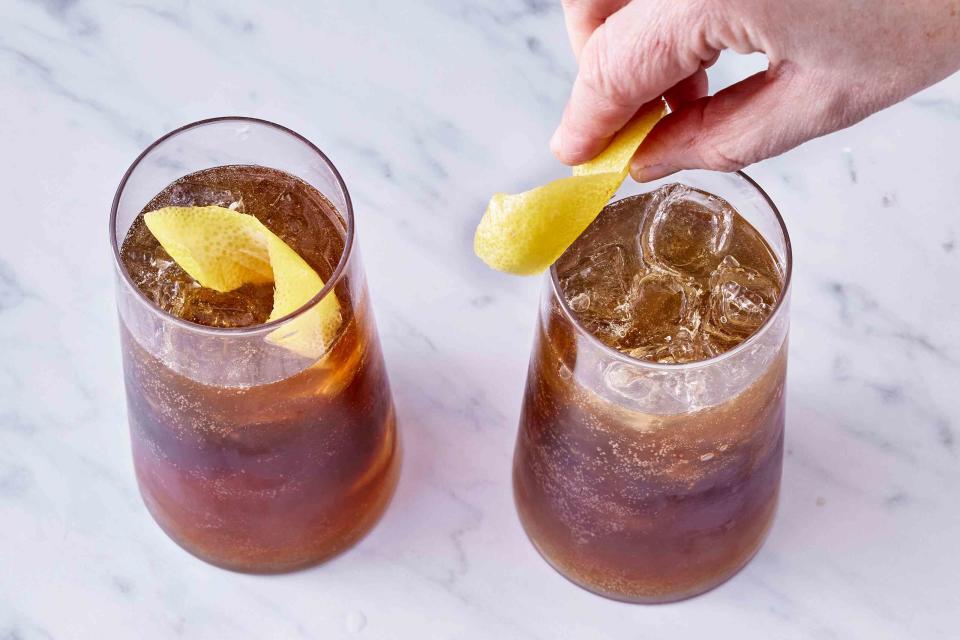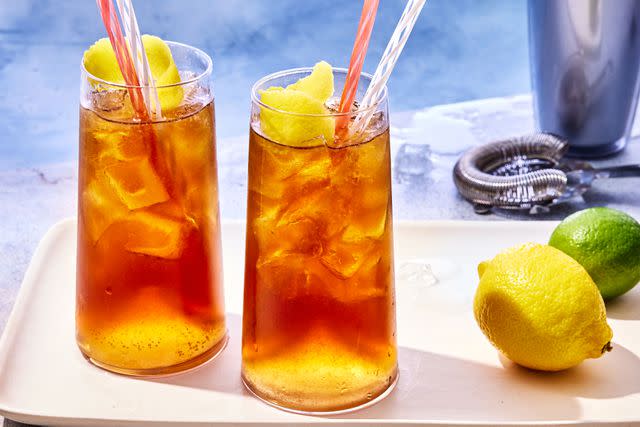Was The Long Island Iced Tea Created In Tennessee?
We dive into whether the drink's fame belongs to Tennessee or New York.

Antonis Achilleos; Prop Stylist: Caleb Clarke; Food Stylist: Emily Nabors Hall
Love ‘em or leave ‘em—or maybe you’ve never even had a sip—chances are you've heard of the Long Island Iced Tea. The potent drink has been around for decades and remains popular for its taste and, let’s be honest, its impact.
But where did the drink originate?
A light-hearted debate about the cocktail’s origin has gone on for years, with one side claiming that the drink was created in Tennessee during Prohibition, while the opposing side says it was created in Long Island, New York in the early 1970s.
According to Visit Kingsport Tennessee, Charles Bishop, also known as Old Man Bishop, created the original Long Island Iced Tea recipe during Prohibition in the 1920s. Legend has it that Bishop blended five liquors—vodka, rum, gin, tequila, and whiskey—with maple syrup for his Long Island Iced Tea, named for the place in which he lived: Long Island in Kingsport.
Bishop’s son, Ransom, contributed to his dad’s concoction by adding cola, and lemon and lime juices, in the 1940s.

Antonis Achilleos; Prop Stylist: Caleb Clarke; Food Stylist: Emily Nabors Hall
Conversely, The Oxford Companion To Spirts and Cocktails, published in 2022, contends that Robert “Rosebud” Butt created the Long Island Iced Tea in 1972 for a bartender competition at the Oak Beach Inn on Long Island. Butt’s winning recipe “was equal parts rum, vodka, gin, tequila (all the white spirits in his well) and triple sec, with splashes of sour mix and cola, served over ice."
In 1976, a Long Island newspaper referred to the cocktail as a “currently popular, brain-destroying discotheque fad drink,” and, according to the book, within five years its popularity spread across the U.S. and soon thereafter, the world.
To get to the bottom of the debate, we talked with Philip Greene, an attorney by day and cocktail historian and author by night. Greene is a co-founder of the Museum of the American Cocktail in New Orleans; his new book, Cheers! Cocktails and Toasts to Celebrate Every Day of the Year, is now available.
"The funny thing is, I’m not aware of a Tennessee story," Greene told Southern Living when asked about the recipe. "Most drinks in our expanded ‘Mount Rushmore’ of drinks, we don’t know who invented them."
When considering the account of Bishop’s recipe in Tennessee during Prohibition, Greene shares a brief history of vodka and when it made its way to the U.S.
"Vodka was not part of the American consciousness during Prohibition,” he explains. “Vodka was a popular spirit at the turn of the century in pre-revolution Russia—the revolution occurred in 1917—so you have the czar and the royal family being overturned, and you had a lot of royals having to get out of Russia.
“This one guy named Smirnov left Russia, moved to France, and started distilling vodka again in France,” Greene continued. “This was taking place in the ‘20s, so you do have vodka in France, in Paris in the 1920s, but you didn’t find it coming across the ocean to the United States until probably the late ‘30s, maybe. And it was drinks like the Bloody Mary and Moscow Mule that put it on the map.
"I have a hard time believing somebody in Tennessee had their hands on vodka, but I could be wrong,” he added. “They were probably using white lightning [Tennessee moonshine] right off the still, un-aged, which you could say is kind of like vodka without any aging or flavor.”
Regardless of when and where the Long Island Iced Tea originated, its popularity continues, and some bartenders are even creating elevated versions of the classic cocktail.
"I think Long Island Iced Teas are part of the drinking landscape, and people are either going to drink them because that’s what they like, or they’re going to drink them for nostalgia,” says Greene.
"I can see using a really good gin, a top shelf vodka, a top shelf light rum, artisan cola, and sour mix made of fresh lime and lemon juice and real sugar,” he continues. “ If you can reimagine it with quality ingredients and it tastes good then, you know, why not?”
We'll toast to that!
For more Southern Living news, make sure to sign up for our newsletter!
Read the original article on Southern Living.

